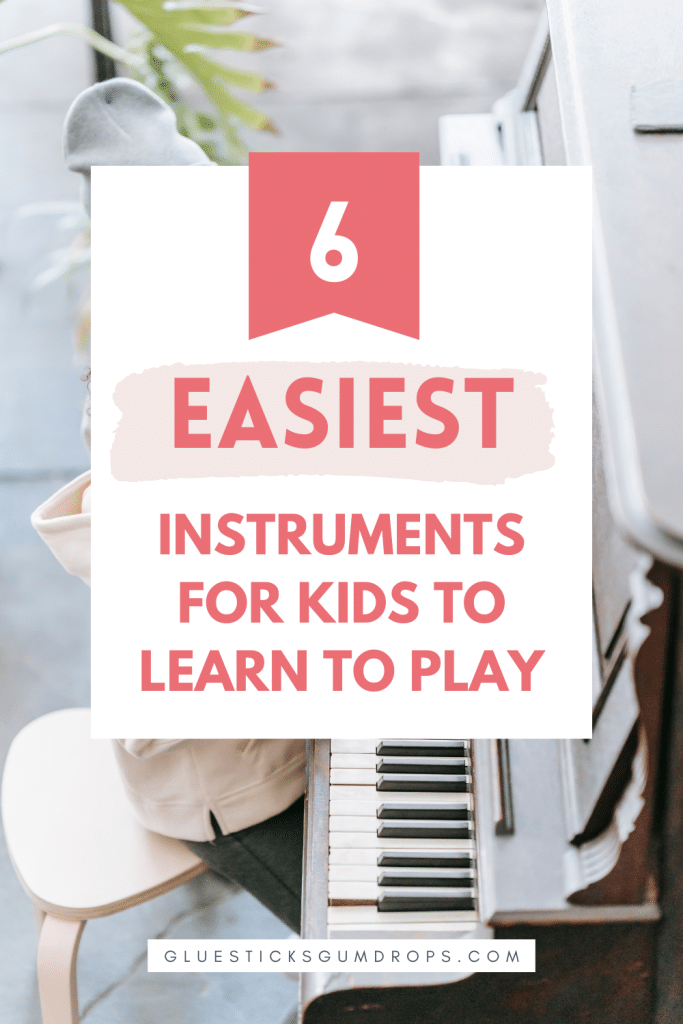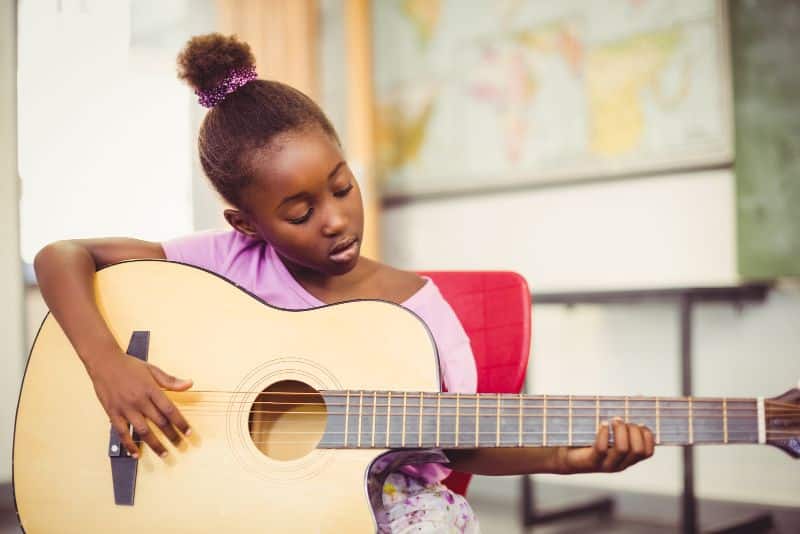It is never too early to introduce a child to music — it can help with their concentration, language skills, ability to focus, and hand-eye coordination. What’s more, learning an instrument provides valuable life lessons in discipline, dedication, and achievement. But which one is best for them to start learning?

Finding the right instrument for your kids doesn’t have to be overwhelming: below we take a look at six of the easiest instruments around—all designed for kids just starting out on their musical journey. Whether you are looking for something classical or contemporary you will find all kinds of options that suit children of any age here.
Guitar
The guitar is an excellent choice for children beginning their musical journey. It’s versatile, available in child-friendly sizes, and can be used to play a wide range of music genres. The child can start with guitar classes in Singapore or any other place where they can learn an acoustic guitar and move on to the electric variant once they grasp the basics.
Guitars are also visually appealing and popular, which can motivate children to continue practicing. However, it’s important to ensure the guitar is the right size to avoid discomfort or injury.

Piano
The piano is another instrument that’s great for beginners, with its straightforward layout of keys making it easy to understand musical concepts. With each key corresponding to a specific note, children can visually grasp the concept of musical scales and chords. Additionally, playing the piano helps improve hand-eye coordination.
Pianos can be bulky and expensive, but a keyboard can serve as an affordable and portable alternative. Furthermore, many beginner piano lessons are available online, making it easier for children to learn at their own pace.
Ukulele
The ukulele, with its small size and fewer strings, is easier for children to handle than a guitar. The soft nylon strings are gentle on little fingers, reducing the chance of soreness. It’s a fun instrument that can introduce kids to string instruments, and its upbeat sound can keep children entertained and engaged.
However, keep in mind that the ukulele’s smaller size can make it more challenging for children to switch to a larger instrument in the future.
Drums
If your child has plenty of energy to burn, the drums could be an ideal choice. Drumming is a fantastic way for children to develop rhythm and coordination skills. Kids can start with a basic drum kit and gradually add more elements as their skills improve.
While drum kits can be noisy, there are quieter electronic options available. For example, the practice pad or electronic drum pad reduces noise and is more suitable for indoor practice.
Or, you can opt for a beginner drum set with mesh head drums, which are quieter than traditional acoustic drums.
Recorder

The recorder has been a staple in music education for children for many years. It’s lightweight, easy to handle, and perfect for introducing children to wind instruments. The basic fingering techniques are relatively easy to learn and can be a stepping stone to more complex wind instruments like the flute or clarinet.
However, there are a few things to consider when choosing a recorder, such as the material (wooden or plastic) and the key system (German or Baroque). Additionally, it’s important to clean and maintain the recorder regularly to prevent any build-up of bacteria.
Violin
The violin is an excellent choice for children who enjoy classical music. It’s a small and lightweight instrument that’s easy to handle, and its compact size makes it ideal for young children. Learning the violin also helps improve posture, motor skills, and hand-eye coordination.
However, playing the violin requires a lot of practice and patience, as it can be challenging for children to produce clear notes in the beginning. It’s best to start with smaller violins designed specifically for children before moving on to the full-sized variant.
Additionally, finding a good instructor is crucial for proper technique and avoiding bad habits.
Choosing the right instrument for a child can seem confusing, given the wide variety available and the unique benefits offered by each one. However, the key is to pick an instrument that resonates with your child’s interests, abilities, and potential musical preferences.
Whether it’s the versatile guitar, the straightforward piano, the compact ukulele, the educational recorder, the energetic drums, or the classical violin, each instrument holds the power to unlock your child’s creativity, boost their cognitive skills, and foster a lifelong love for music.
Remember, every child is different, and the best instrument is the one they will enjoy and continue to play. So, encourage them to try different instruments, understand their comfort level, and then make a decision.
By investing in your child’s musical journey, you’re not only supporting their artistic expression but also contributing to their overall development.
